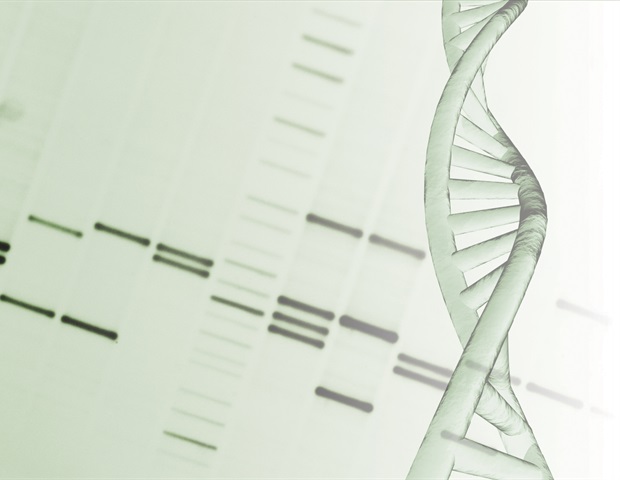
In a discovery that would redefine how we perceive mobile resilience and adaptableness, scientists at Scripps Analysis have unlocked the key interactions between a primordial inorganic polymer of phosphate often called polyphosphate (polyP), and two fundamental constructing blocks of life: DNA and the component magnesium. These elements fashioned clusters of tiny liquid droplets–also referred to as condensates–with versatile and adaptable constructions.
PolyP and magnesium are concerned in lots of organic processes. Thus, the findings might result in new strategies for tuning mobile responses, which might have impactful functions in translational drugs.
The following examine, revealed in Nature Communications on October 26, 2024, reveals a fragile “Goldilocks” zone-;a particular magnesium focus range-;the place DNA wraps round polyP-magnesium ion condensates. Just like a skinny eggshell masking a liquid-like inside, this seemingly easy construction might assist cells manage and shield their genetic materials.
This work started as a collaboration between co-senior authors Affiliate Professor Lisa Racki, PhD, and Professor Ashok Deniz, PhD, each within the Division of Integrative Structural and Computational Biology at Scripps Analysis. Racki had been finding out these constructions in bacterial cells, whereas Deniz’s next-door lab was exploring the bodily chemistry of biomolecular condensates for the previous decade. Collaboration, they realized, was the one method to unlock these historic interactions.
“We knew that DNA was in shut proximity to the magnesium-rich polyP condensates in cells, however we had been completely stunned by the attractive spheres of DNA that lit up underneath the microscope,” says Racki.
Being molecular detectives, seeing these constructions raised thrilling questions for us concerning the physics and arithmetic of the DNA shells and whether or not they influenced the polyP condensates.”
Professor Ashok Deniz, PhD, Division of Integrative Structural and Computational Biology at Scripps Analysis
Their microscopy photos revealed that DNA wraps itself round a condensate, creating a skinny eggshell-like barrier. This shell might have an effect on molecule transportation and in addition decelerate fusion: the method the place two condensates merge into one. With out DNA shells, polyP-magnesium ion condensates readily fused-;like how oil drops and vinegar fuse in a salad dressing bottle when shook.
Nevertheless, cautious examination confirmed that fusion total slowed to various extents, relying on DNA size. Longer DNA, the researchers suspected, brought about larger entanglement on condensate surfaces-;just like how lengthy hair tangles greater than brief hair.
DNA is greater than 1,000 instances thinner in diameter than condensates, making molecular particulars laborious to visualise. Happily, infrastructure to seize such imaging has been developed by two different school members at Scripps Analysis: Assistant Professor Danielle Grotjahn, PhD, and Scripps Fellow Donghyun Raphael Park, PhD.
Teaming with Park, with assist from Grotjahn, the researchers used cryo-electron tomography to carefully study the condensate surfaces. Utilizing electrons as a substitute of sunshine, this system captures three-dimensional, high-resolution photos of samples that had been quickly frozen to protect their constructions. The brand new photos revealed that DNA varieties filaments protruding from condensate surfaces, resembling tangled hairs.
One other essential discovery: DNA shell formation solely occurred inside a particular magnesium focus range-;an excessive amount of or too little, and the shell would not materialize. This “Goldilocks” impact highlights how cells can regulate condensate construction, measurement and performance just by tuning management parameters.
“Though we consider mobile interfaces as boundaries, additionally they create a brand new panorama by offering a floor for molecules to prepare,” notes Racki. “DNA might not really be a tangled mess on the floor and is as a substitute organized by these condensates.”
On this context, Deniz and Racki are notably fascinated by understanding DNA supercoiling-;how DNA twists like a spring to suit inside cells.
“Cells should handle their DNA curls,” explains Racki. “Curiously, the arithmetic of DNA supercoiling ends in ‘action-at-a-distance’ effects-;like how twisting a rope can create coils removed from the place you are holding it.”
The researchers suspect that DNA interactions with polyP condensates in cells may propagate native adjustments in DNA supercoiling over lengthy distances, leading to broader adjustments in gene expression and cell operate. Investigating this impact is without doubt one of the workforce’s subsequent objectives.
“We’re excited by the prospects of leveraging these discoveries to develop new instruments for mobile control-;probably easier, cheaper approaches to handle biomatter for biomedicine,” says Deniz.
Supply:
Journal reference:
Chawla, R., et al. (2024). Reentrant DNA shells tune polyphosphate condensate measurement. Nature Communications. doi.org/10.1038/s41467-024-53469-x.
